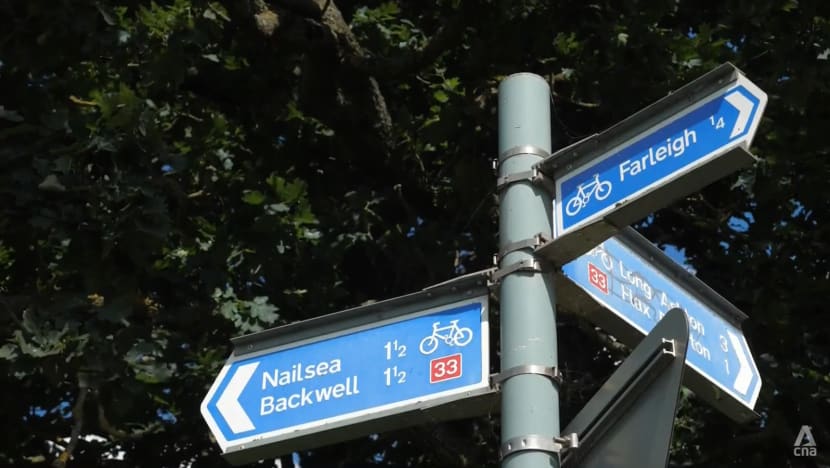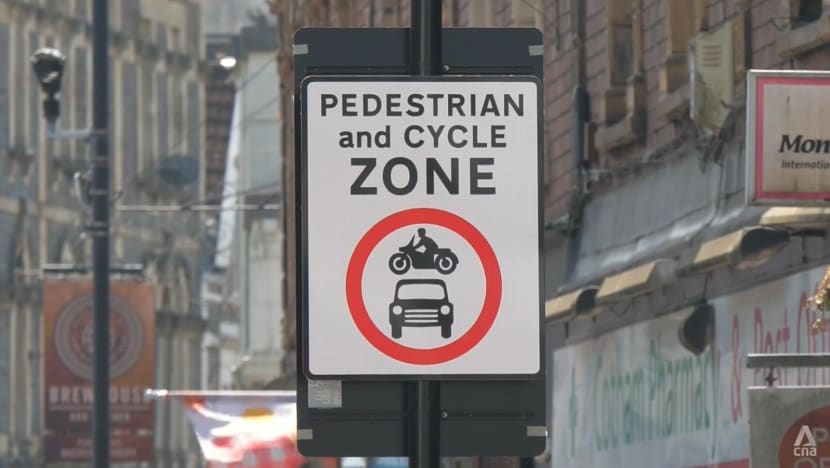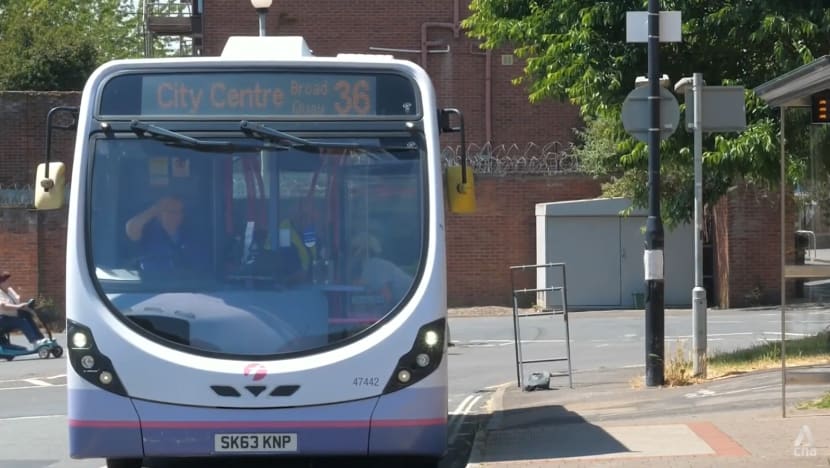Local ambitions for liveable cities in UK grow, amid central government pivot on green promises
Authorities at the local level have been drawing inspiration from the popular urban planning concept of "The 15-minute city", where you have everything you need within 15 minutes of your front door.

The various schemes in different places have been met with different levels of popularity.
BRISTOL: Environmental campaigners in the United Kingdom are worried that the government is going back on green promises that are not universally popular with voters.
Its recent decision to allow more oil and gas drilling in the North Sea has been described as hypocritical, for a country trying to achieve net zero carbon emissions by 2050.
Despite the changes in opinion at the centre of government, authorities are still rolling out schemes to improve local communities.
They have been drawing inspiration from the popular urban planning concept of "The 15-minute city", where you have everything you need within 15 minutes of your front door.
LIMITING TRAFFIC
In Bristol’s Cotham Hill, sections of road were closed during the COVID-19 pandemic to help with social distancing, and allow hospitality businesses to reopen safely.
Two years on, residents were given a series of options about the path forward, in which 90 per cent of respondents chose to keep the road closed to traffic permanently.
It provides a possible vision of the future for Bristol, the largest city in southwest England.
Clifton Down ward councillor Tom Hathway from the Green Party told CNA: “It’s absolutely something we need to be doing as cities here in Bristol, the UK and right across the world.
“We have a commitment to becoming net zero by 2030 here in Bristol, and lots of cities have similar targets.”

Such Liveable Neighbourhoods, as they are known, are designed to be inclusive and attractive places where people can feel part of a community.
It is a step below the concept of a “15-minute city”, but also largely involves limiting traffic.
The East Bristol Liveable Neighbourhood Pilot Scheme is the most ambitious scheme of its type in the city, costing £7.5 million (US$9.43 million).
There has been extensive public consultation to work with the community and target problem areas.
The project is largely about traffic management, with keeping cars on main roads and reducing the speed and volume of traffic among its key goals.
Liveable Neighbourhood campaigner Rob Bryher said the aim is to identify changes that can reduce traffic, noise and air pollution in the space, making it a better place for people to live in.
GIVING UP CARS
With so many of such schemes linked to traffic, campaigners said persuading people to give up their cars is a major challenge.
One reason is that people do not feel safe cycling or scooting on the streets.

There is also the wider issue of public transport, which many argue needs significant long-term investment in order to persuade people to give up their car keys.
A temporary scheme to cut fares across the UK has been extended to the autumn, in a bid to get more people onto public transport.
Away from city centres, however, bus routes have been slashed in many places.
DIFFERING LEVELS OF POPULARITY
The various schemes in different places have been met with different levels of popularity.
In London, some Low Traffic Neighbourhoods (LTN) have been met with fierce local opposition.
For instance, the one in Dulwich aims to keep traffic off side streets, meaning the main road is often solid with congestion.
Conservative Party campaigner Tristan Honeyborne said it is inconsistent with the objective of a “15-minute city”.
“Public transport has to be a part of the solution, we need more electric buses, better train services and we do need changes to make our roads safer for cyclists,” he said.
The current transport secretary recently stripped central government funding for future schemes aimed at creating car-free zones.
The move aims to avoid punishing motorists, and instead offer more incentives for people to not drive.
The £250 million worth of funding will instead be diverted to develop more cycling networks.
Some argue that the pilot scheme should only be the beginning of a larger movement, with much bigger plans needed to make neighbourhoods truly more liveable.
















